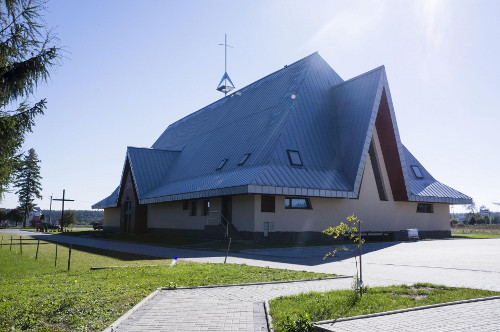- Professionel
- Arkitekter
- Inspiration
- Passive Church in Poland
Passive Church in Nowy Targ, Poland
The church on Rownia Szarlarska in Nowy Targ is the first of its kind object in Europe built with the use of passive construction technology. The church has been equipped with FAKRO energy-efficient windows.
The initiator of the application of energy-efficient solutions in the sacred construction became a priest Jan Karlak from the parish to which this church belongs. The temple was designed by specialising in the passive construction Tomasz Piszczek and Marcin Stelmach from Passive Architecture design studio.
The object through its design refers to the historical style of the region, whereas through technological solutions it has become a sign of deep respect for the Earth's natural resources for a long years.

To construct the object featuring passive building standard, there have been used widely available technological and material solutions guaranteeing long-term economy of operation and ensuring lasting aesthetic architecture unique in the world.
The building with the area of 1740m2 is intended to be used by approximately 500 people. All external partitions of the building have been designed at the level of 0.1 W/m2K, which is possible thanks to the very good insulation materials with low thermal conductivity coefficient.
Heating of the church was designed basing on the low-temperature floor heating with the heat pump powered by deep-water wells. Additionally, supply-exhaust mechanical ventilation with a highly efficient heat recovery of 85% was applied.
Passive church for active worshippers is a new quality naturally suited to the needs of the modern society, vision of the Church of twenty-first century, with which people will willingly identify.





